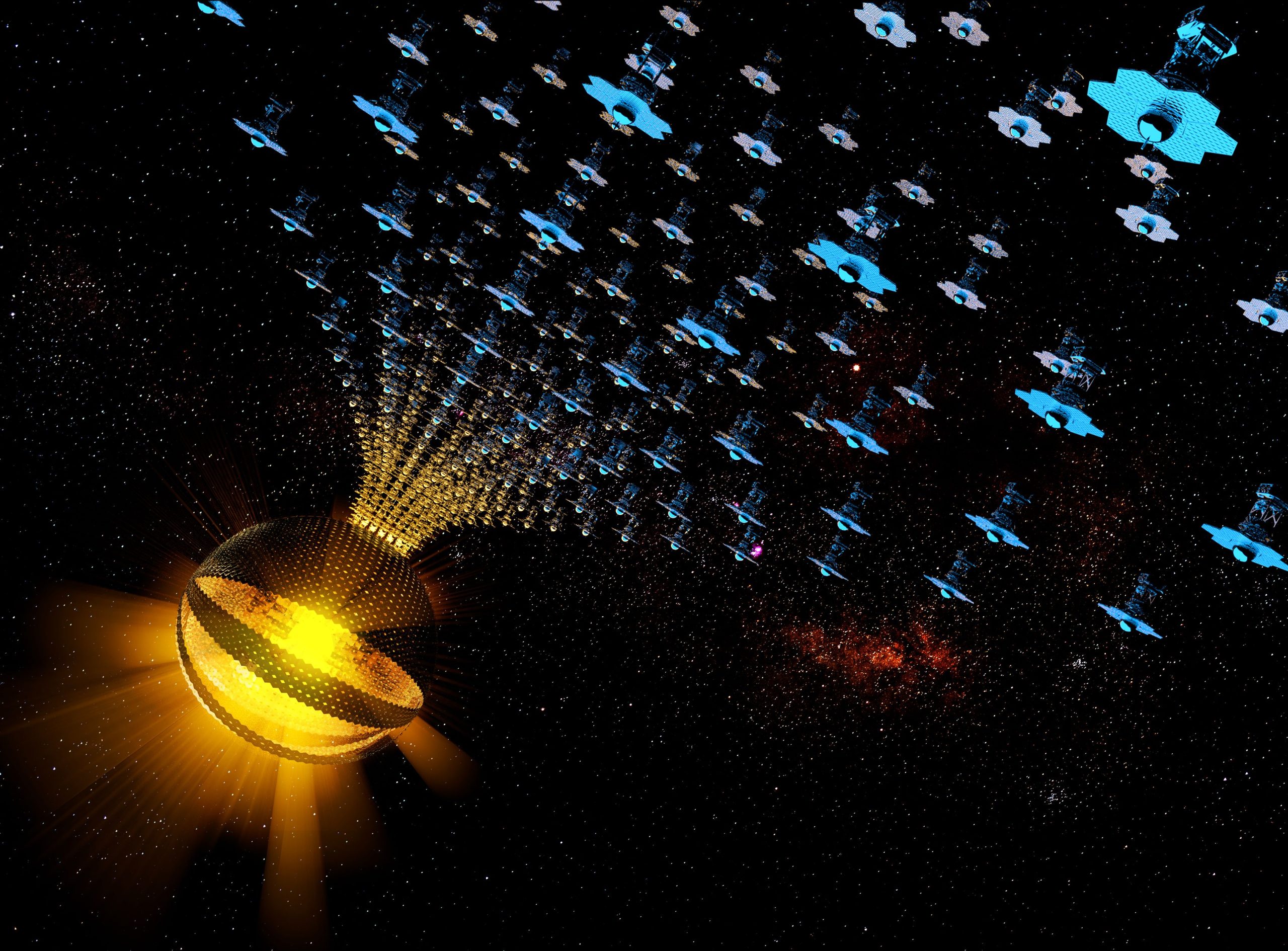As our global population continues to grow, so does our energy demand. Fossil fuels, our primary source of energy, are finite and polluting, driving us to search for more sustainable alternatives. One such solution is the Dyson Swarm, a megastructure that could surround a star to capture and harness its energy output. This concept, first proposed by physicist Freeman Dyson in 1960, has captured the imagination of scientists and futurists alike as a potential solution to our energy crisis. In this article, we'll explore 10 key things you should know about the Dyson Swarm and how it could revolutionize the way we power our world.
In a world where energy demand continues to grow, finding sustainable solutions has become a top priority. One such innovative idea is the Dyson Swarm, a futuristic concept that has the potential to revolutionize how we harness energy from the stars. Here are ten things you should know about this fascinating cosmic tech and how it differs from a Dyson Sphere.
-
What is a Dyson Swarm?
The Dyson Swarm is a megastructure concept that envisions a large number of independent constructs, such as solar power satellites orbiting a star in a dense formation. This design allows for a more efficient and scalable method of capturing energy from the star, providing an almost limitless energy source for humanity.
-
The Origin of the Concept
The Dyson Swarm is a variant of the original Dyson Sphere, which was proposed by physicist Freeman Dyson in 1960. Dyson’s idea was to create a shell-like structure surrounding a star, capturing the majority of its energy output. The Dyson Swarm has since evolved as a more practical and feasible solution.
-
Construction Advantages
Unlike the Dyson Sphere, the swarm offers several construction advantages. Components can be sized appropriately, allowing for easier production and assembly. Additionally, the swarm can be constructed incrementally, meaning that as more components are added, the energy output grows in tandem.
-
Wireless Energy Transfer
One of the key features is the ability to transfer energy wirelessly between swarm components and a planet. Various forms of wireless energy transfer, such as microwave or laser transmission, could be utilized to beam the captured energy back to Earth or other space settlements.
-
Dyson Swarm: Limitless Energy Potential
The Dyson Swarm’s primary attraction is its ability to harness a near-infinite energy supply. With a fully operational swarm, humanity could potentially tap into the vast power output of a star, providing an unprecedented energy source for our ever-growing needs.
-
The Challenges of Building a Dyson Swarm
While the concept is captivating, constructing one presents numerous challenges. These include the immense scale of the project, the need for advanced materials and technologies, and the requirement for large-scale space infrastructure.
-
Environmental Impact
A Dyson Swarm could have significant environmental implications. By capturing the majority of a star’s energy output, it may impact the surrounding planetary systems, potentially disrupting the delicate balance of celestial bodies. However, the benefits of a near-limitless energy source could outweigh these concerns.
-
Impact on Space Exploration and Colonization
The successful implementation of a swarm could pave the way for further space exploration and colonization. With access to near-limitless energy, humanity could power advanced spacefaring technologies and establish settlements throughout the galaxy.
-
Current Progress and Research
Though the concept of a Dyson Swarm is still largely theoretical, scientists and engineers are actively researching the necessary technologies and materials to make it a reality. In recent years, developments in solar power, materials science, and space infrastructure have brought the possibility of a Dyson Swarm closer than ever before.
-
The Future of the Dyson Swarm
While we may be decades, or even centuries, away from realizing the full potential of a Dyson Swarm, the concept holds tremendous promise for the future of energy production. As research continues and our understanding of the cosmos expands, the Dyson Swarm may one day become a cornerstone of humanity’s energy infrastructure.
My take
The Dyson Swarm represents an ambitious and innovative approach to solving humanity’s energy challenges. By harnessing the immense power of a star, we could unlock a future of limitless possibilities, forever changing our civilization and the technologies we could power.
This futuristic energy solution could potentially provide enough energy to power not just our planet, but entire civilizations, as well as enable us to travel deeper into space and explore distant galaxies. With the Dyson Swarm, we could reduce our reliance on fossil fuels, mitigating the effects of climate change and protecting our planet’s fragile ecosystems.
However, building a Dyson Swarm would require an enormous amount of resources and technological advancements beyond our current capabilities. It would also pose significant ethical questions about how to share and distribute such vast amounts of energy among different nations and people.
PLEASE READ: Have something to add? Visit Curiosmos on Facebook. Join the discussion in our mobile Telegram group. Also, follow us on Google News. Interesting in history, mysteries, and more? Visit Ancient Library’s Telegram group and become part of an exclusive group.

